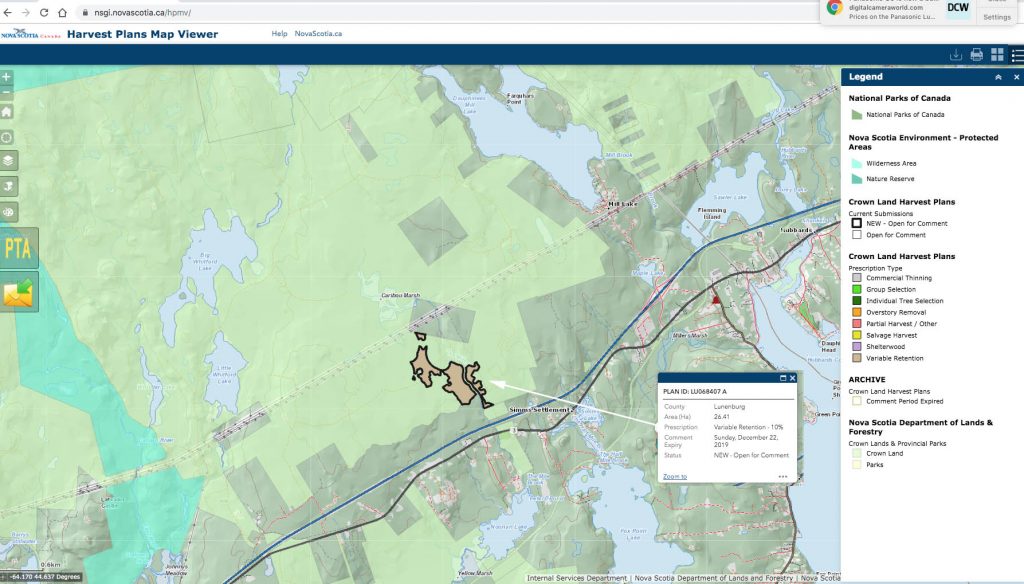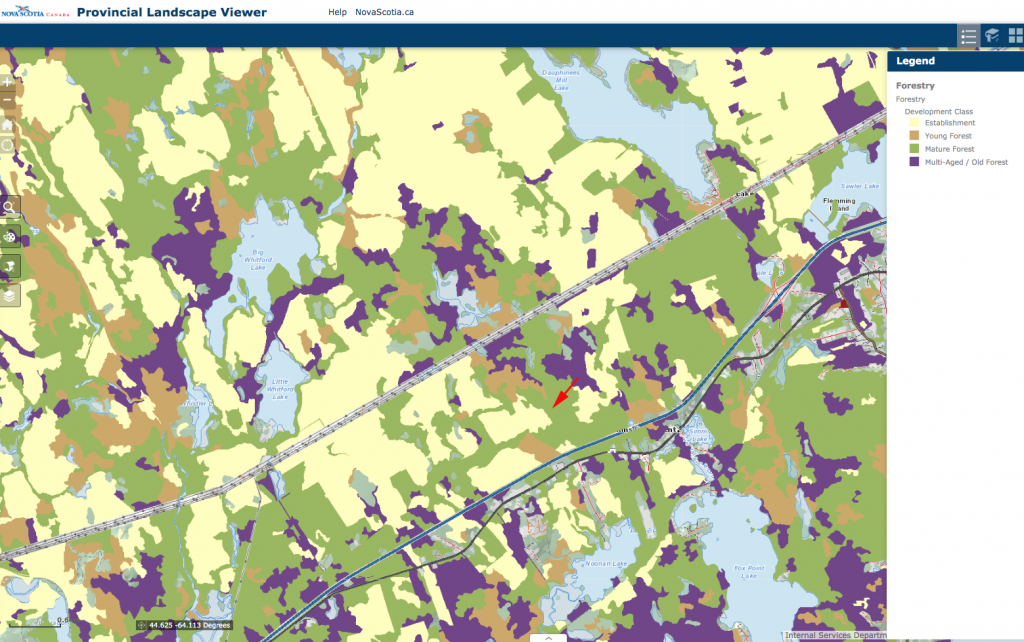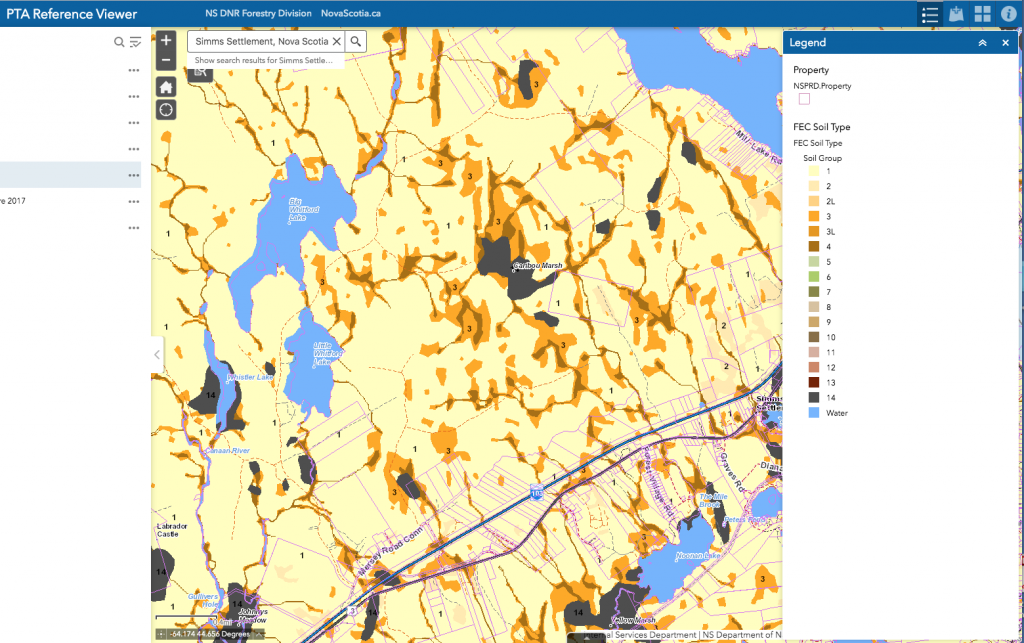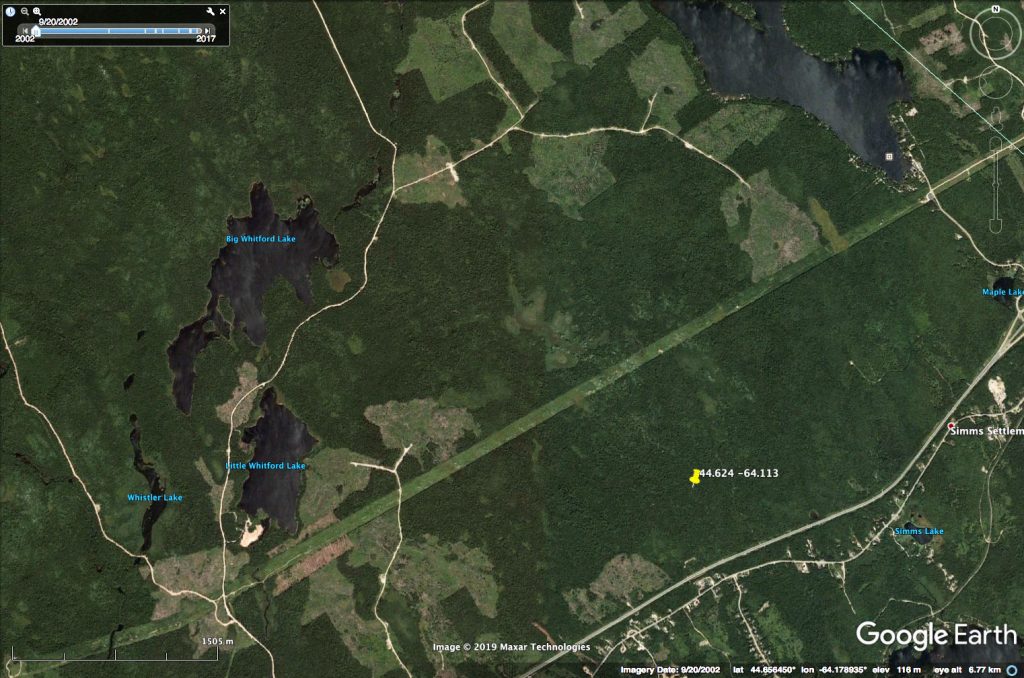And with no Landscape Level Planning for Biodiversity Conservation and No Nutrient Management on the severely depleted soils

The feelings many Nova Scotians have expressed when they return to a site where once stood a mature forest and now a sloppy clearcut as at Higgins Mt are universal (View video). The [bad] feelings are compounded by rising global concern over climate change and biodiversity losses.
Also on Nov 201, 2019: Environmentalists say logging companies are rushing clearcuts near Lake Deception before new forest regulations come into effect
by Jennifer Henderson for the Halifax Examiner “Environmental groups are pushing back against three proposed cuts in a rural area near Lake Deception north of Shelburne. The cuts are on Crown land allocated to 13 companies in the WestFor group, which includes Northern Pulp, Louisiana Pacific, Ledwidge Lumber, and Harry Freeman & Sons. These “variable retention” cuts (a forest industry euphemism for…”
——-
In a few words and photos, the author of the blog My Acadian Forest paints a devastating image of forest degradation along the backroads of Lunenburg County.
The fall colours were stunning, so many beautiful lakes, hilltop farms, gorgeous old stone work.
And clearcuts.
So many clearcuts.
…I appreciate that we need forestry. I live in a wooden house. And neighbours work in the sector.
But is this kind of cutting sustainable? Please, let me know.
Because from the seat of my vehicle, it looks like its going fast.
Read more of ‘Scenic Drives’ by Tom Rogers.
I guess much of what T.R. is seeing is on Private Lands, where Nova Scotians have the right to conduct major environmental alterations with no EA (Environmental Assessment) or even a forest harvest PTA (Pre-Treatment Assessment as required on Crown lands).
And on the severely acidified, nutrient-deficient landscapes that predominate in much of SW Nova Scotia, such clearcuts reduce the forests’ long term productivity, cause direct harm to the associated forest and aquatic biodiversity, and greatly reduce carbon carbon sequestration when we need it most.
Meanwhile clearcutting – or something very close to it (“Variable Retention“) – continues on Crown lands where at least a PTA is required but still with no Landscape Level Planning for Biodiversity Conservation and no reference to the severely acidified, nutrient-deficient state of the soils so well documented by L&F’s Kevin Keys in a peer reviewed scientific paper which remains out-of-sight on the L&F website.
Here’s an example from the latest posting of ‘proposed’ Crown Land harvests (I just picked the first one listed for Lunenburg Co. from the latest Harvest Plan Map Viewer Update):

The proposed harvest. The archive layer shows no previous harvests in the area, so we have to look to other sources for info on that score. Screen capture (Nov 19, 2019) from the HPMV.
Click on image for a larger version

Google Earth Image for 2018: roads extended and no stop to the clearcutting that began in earnest before 2001

NS Provincial Landscape Viewer (screen capture, Nov 19, 2019) – the pale yellow is forest recovering from clearcuts. What remains of multi-aged/Old Forest (purple) is severely fragmented

Global Forest Watch – blue patches are pre-2001 clearcuts, pink post 2002 clearcuts

The soils: a predominance of FEC Soil Type ST1: “Generally very poor to poor in fertility and prone to drought”. Source: Screen capture (Nov 19, 2019) from Pre-Treatment Assessment Reference Viewer
Now go to Figure 3 in Keys et al, 2016. It’s a low res Map, but the message is clear: most of this area is RED with a Base Saturation in the range 5-10%, i.e. severely depleted. Keys et al. (2016), acknowledge that clearcutting will make it even worse.
So here we are approaching a year and a half since the Lahey Report, and what has changed substantively? What, if anything, will change substantively when L&F finally gets to implementing the recommendations of the Lahey Report?
Why in the meantime, it has to be asked, has L&F not taken at least a precautionary approach to Landscape level Planning for Biodiversity Conservation i.e. one that errs on side of caution to protect biodiversity, even though in instances that may come at the cost of lower wood supply – or higher operating costs- to Big Forestry? (Actually, Landscape Level Planning for Biodiversity Conservation is NOT, amongst L&F’s priority responses to the Lahey Report – view Post, Sep 26, 2019).
Likewise, why in the meantime, it has to be asked, has L&F not taken at least a precautionary approach to nutrient management, e.g., by prohibiting any clearcutting in watersheds that are severely acidified?
Indeed, why, it has to be asked, has L&F done nothing, beyond a couple of presentations or workshops by Kevin Keys for select audiences, to publicize and encourage discussion of the nutrient depletion issue? An example of the many implications: softwoods are better able to grow on calcium-poor soils than hardwoods (re Keys et al, 2016), but it’s the hardwoods we need more of to adapt to climate warming. On those droughty nutrient poor soils of SW Nova Scotia, more conifers will be an open invitation to more fires…
So it goes in Nova Scotia in 2019.
ADDENDUM Nov 21, 2019: To view a much more precautionary approach to forestry in SW Nova Scotia, view Harvest Blocks Open for Comment on Medway Community Forest Co-op website, Oct 21, 2019
Some related posts on NSFN
Nova Scotia L&F soil scientist Kevin Keys to talk about the elusive Forest Nutrient Budget Model at MTRI Thurs Aug 8, 2019
Posted August 5, 2019
Why is the low base saturation/soil acidification/nutrient depletion/extreme surface water acidity in SW Nova Scotia still ignored in Crown land harvest decisions?
Posted February 3, 2019
More NSDNR research on Nova Scotia forest soils published in science journals but not publicized by NSDNR
Posted July 25, 2018
Biodiverse Southwest Nova Scotia at Risk
Posted October 29, 2018
Halifax Green Network Plan released June 21, 2018 puts Landscape Level Planning for Halifax well ahead of the province as a whole
Posted June 23, 2018
Loon Lake clearcuts continue, illustrate lack of landscape level planning
Posted February 11, 2018
Science issues and lack of landscape/watershed level planning by Nova Scotia DNR limit what can be achieved through forest certification
Posted February 22, 2018
Clearcut Nova Scotia continued..4July2017 & highgrading at the landscape level
Posted July 6, 2017
Nova Scotia municipalities lead the way in addressing climate and biodiversity crises, L&F Please follow! 26Sep2019
Posted September 26, 2019
He went for a walk in the woods but the woods were gone
Posted June 3, 2018

